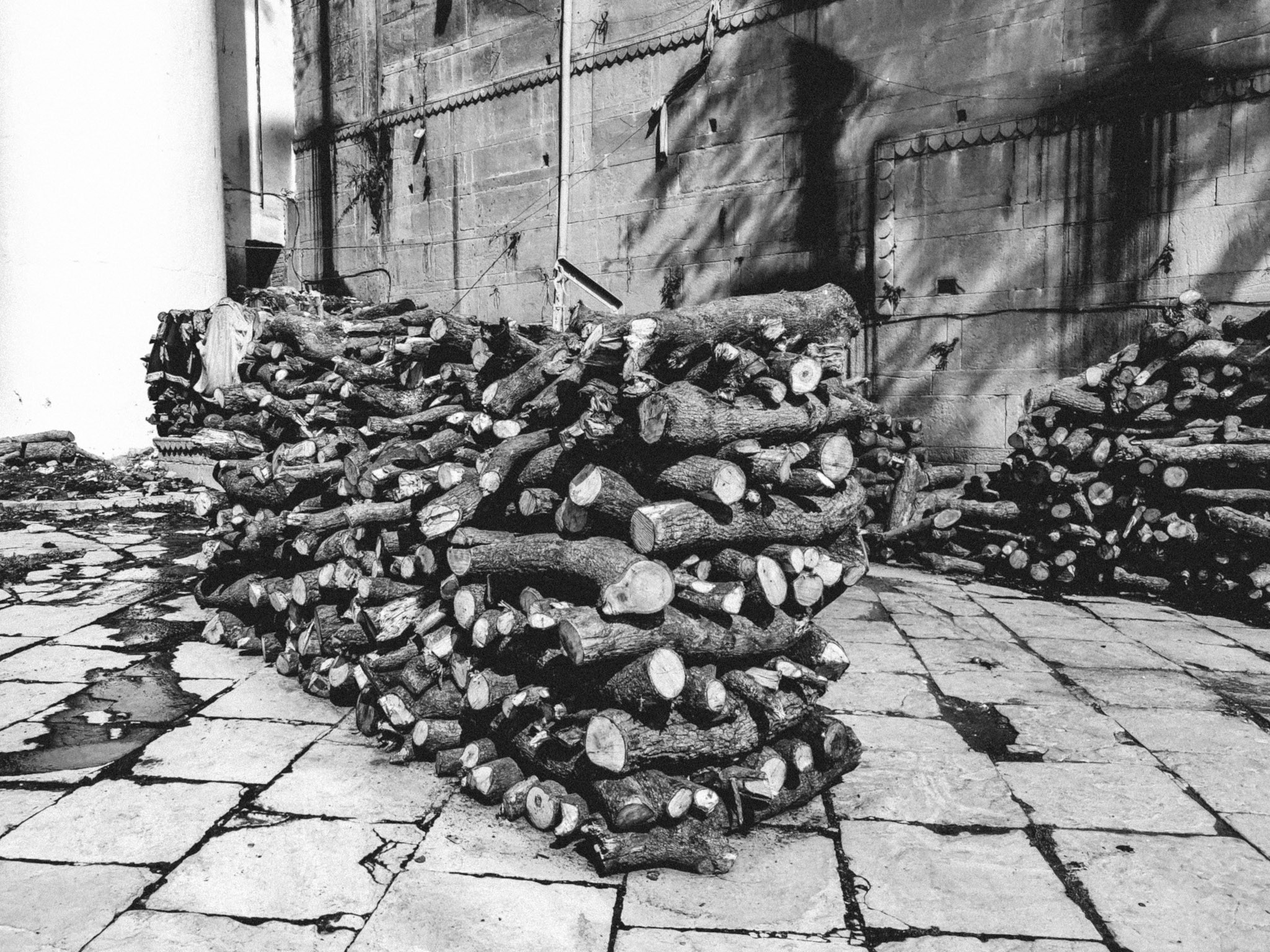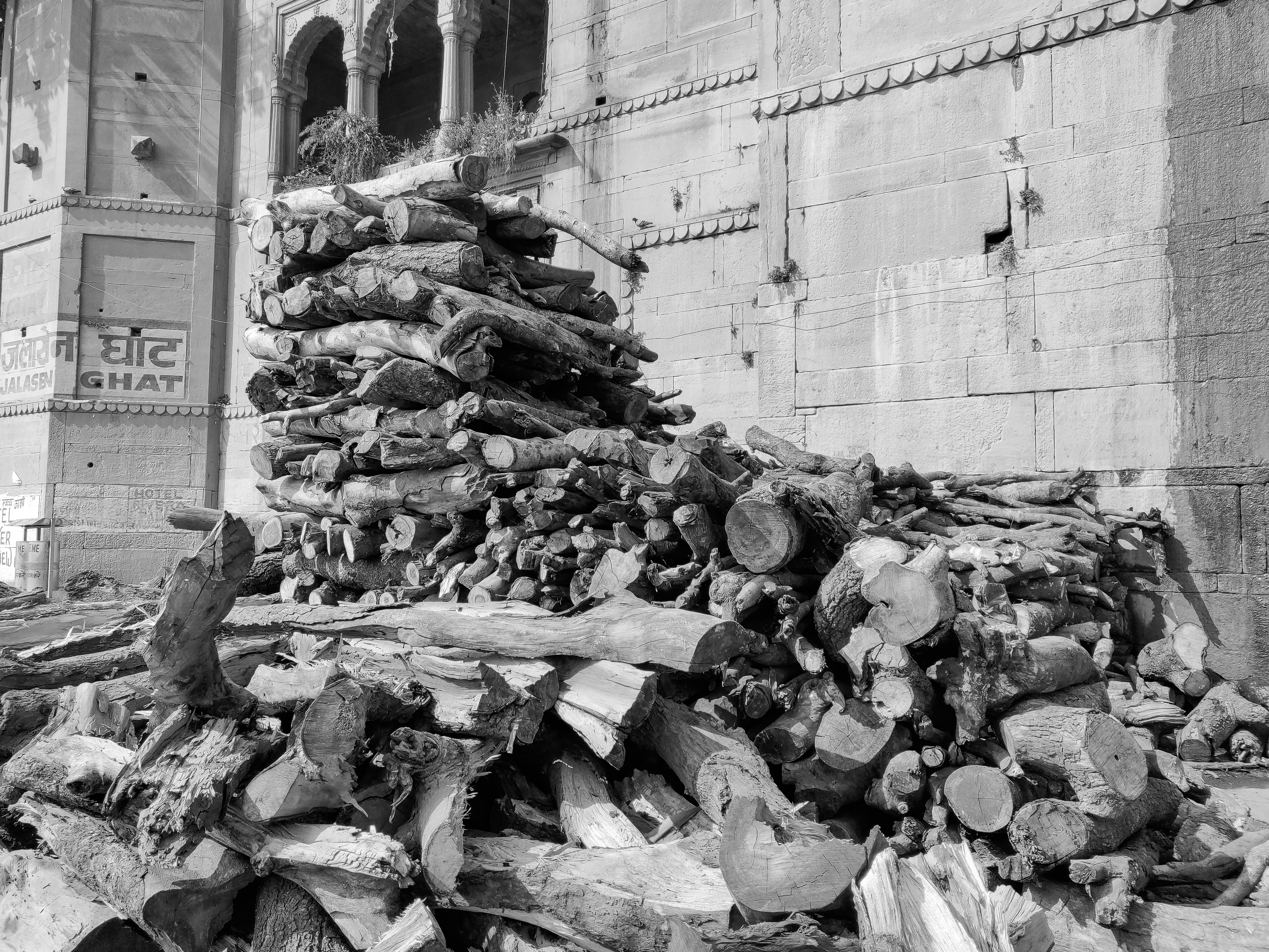The guests were upset. The hotel was clean. There were no bugs, rats or other animals. The problem was next to the hotel – a morgue to hold the dead before they are taken through the narrow alleyways of Varanasi to Manikarnika Ghat.
“I don’t understand why they get so upset,” said Arup Kumar Bhattacharya of the hotel. “This is Varanasi. The dead are always brought in and burned at the ghat every day. I have lived here all my life, and it hasn’t bothered me. I just don’t understand some people. What is their hang up on death?”
It is estimated over 300 people a day are cremated at either the Manikarnika or Harishchandra Ghat. They are better known as the burning ghats. In most cultures, death is treated as a sad and somber affair, but here it’s where people gather, smile and work. Women mourners are generally not allowed since they may get too “emotional and throw themselves on the fire,” said Prashant our guide around the Manikarnika Ghat.
He is a Dom, the lowest ring on the Hindu Caste System and helped with the funeral services for over 50 years. In the Hindu world, death is seen as contagious. Only the lowest caste can touch the dead. He is now in his 70’s and no longer takes part but helps the tourists in understanding what is going on.
The process is long, and each step involves the Ganges River. Hindus believe life is suffering. Reincarnation into different beings is continued suffering. If a body is burned at this sacred spot, then the cycle of pain can end. The soul can be released, with the help of the fire, to achieve nirvana or a state of heaven. The body needs to be burned within 24 hours of death and go through a rigid set of rituals.
On a sunny afternoon, I stood as a body, wrapped in white silk with flowers and gold cloths were lifted from the river and placed on a carefully constructed pile of wood. The more massive logs were placed on the body so when it burns, it doesn’t sit up. Shavings of sandalwood and incense are poured around the body and in the hair. It is why it doesn’t have a strong smell. Beside me were people using telephoto lenses to capture everything. Generally, photos are not allowed. Some believe it hinders the souls ascend to nirvana. Some think it is a ploy to get more money by offering a fee so the photographers can take pictures. For me, it is not right or decent to take photos at a funeral.

The locals, working the fire, or selling water are smiling, and all look happy. The monk looking guy beside me had a big grin. Death is not sad. It’s a critical part of life. Death helps us prioritize what is essential by helping us understand our time is short. Who and what we spend our time on is what is most important. It’s sad to see a loved one leave but understanding the cycle helps explains Prashant.
At the Ghat, there are different leveled fire pits. The one on top has tall concrete pillars around it, and in my time, no one was burned. It is for the Brahmins or the highest. All are below them. There are the ones who can’t afford to be burned.
A man in white, with the shaved head, is the person closest to the deceased and is the head mourner. He takes twigs, wood, and other burning items to the Fire of Shiva from the temple to ignite the body. The fire has been going for the past 3000 years non-stop. It is always maintained and cared for. Legend says it was started by the god of death and the most powerful Hindu god – Lord Shiva. The fire is taken to the body.
The body burns as long as there is wood. An average body needs 360kg of wood. For the rich, who can pay for a lot of wood, it can be for hours and hours. For those who can’t afford, it can be a couple of hours. In the fire, the head is cracked open, softened by the flames, to release the soul.
Around the ghat are tall stone buildings caked in black soot. In them are filled with older people who wait to die. The dead need to be burned within 24 hours of death to begin the process. They tend to live close to the Ghat and move here from different parts of India to be near when their time may come. If someone died overseas, some or all of their ashes may be transferred here to be poured in the Ganges.
Funerals continue all day and night. Some estimate there are 300 a day. An enclosed temple, above the ash open burning pits, is used when there is rains, monsoons or other storms. Once the fire has burned as much as it could, it is extinguished using water carted in from the Ganges. After enough time has passed, the ashes and any gold are collected by the head mourner and taken and released into the sacred river. Gold or other precious metals warn by the deceased are gathered in the river by the Doms as part of their fee.
The only ones not burned are holy men, children, and pregnant women as they are too pure to burn. Traditionally, a stone is tied to the body, and they are dropped into the river.
Amongst the burning, people move about, life continues. Cows are eating the flowers off of the bodies. Sometimes they are urinating on the dead. There is no push move or scold them. It is part of life. People not working are drinking chai tea, smoking, hanging out with friends. Tourists are taking pictures and are also being lead on tours. Things move on.
